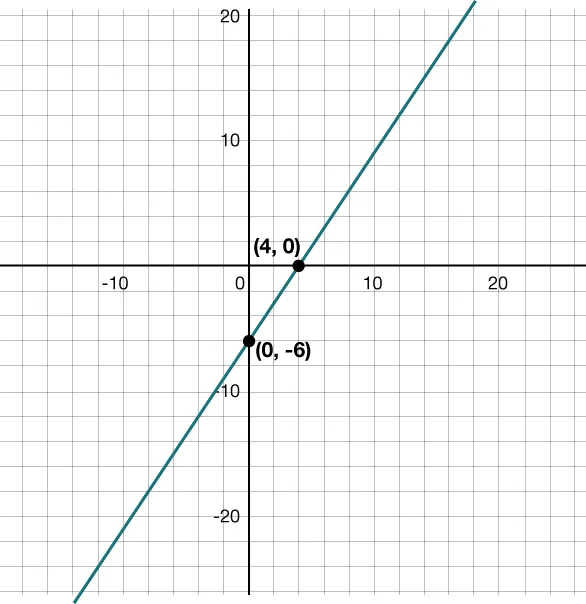1.11.3 • Reasoning Symbolically and Abstractly about Linear Equations
Activity
For questions 1 – 5, select the slope and intercept that corresponds to
each equation:
1.
,
,
,
,
,
,
2.
-
,
-
,
-
,
-
,
-
,
,
3.
,
,
,
,
,
,
4.
,
,
,
,
( m=3 \),
5.
,
,
,
,
,
,
Using Standard Form and Intercepts to Graph
Standard form, , is helpful for finding the -intercepts and -intercepts of an equation.
For questions 6 – 11, use the equation .
6.
What is the value of at the -intercept?
7.
What is the -intercept of the
equation?
8.
What is the value of at the -intercept?
9.
What is the -intercept of the
equation?
10.
Use the graphing tool or technology outside the course. Plot the two
intercepts and the equation of the line, using the Desmos tool below.

11.
Using the graph from question 10, what is the slope of the line in
simplest form?
Compare your answer:
Are you ready for more?
Extending Your Thinking
For questions 1-2, use the equations below:
These are the equations from the activity. Each equation is in the
form .
1.
Observe the graph of the equation where it is
graphed, on the same coordinate plane, with another line passing through
and .
In this example and , so the other line
would pass through
and .
What do you notice about the lines?
Compare your answer:
Answers may vary, but here is a sample. The two lines are
perpendicular.

2.
Use the graphing tool or technology outside the course. Graph the
equation that represents this scenario using the Desmos tool above. Then make another
observation about the lines.
Compare your answer:
Answers may vary, but here is a sample.The two lines are always
perpendicular.

What is the slope of the line ?
-
-
-
-
Additional Resources
Video: Using Standard Form
Watch the following video to learn more about using standard form to
find slope and -intercepts.
Using Standard Form
1.
Find the slope for .
2.
Find the -intercept
for .
Compare your answer:
Strategy 1: Solve for .
Step 1 - Subtract the term
from both sides.
Subtract from
both sides.
Step 2 - Simplify.
Step 3 - Divide both sides by the
coefficient of .
Divide
both sides by .
Step 4 - Simplify.
The
slope is the coefficient of , so the
slope is 5. The -intercept
is the constant, which is −15.
Strategy 2: Use standard form.
Step 1 - Identify A, B, and C.
In , , , .
Slope:
-intercept:
